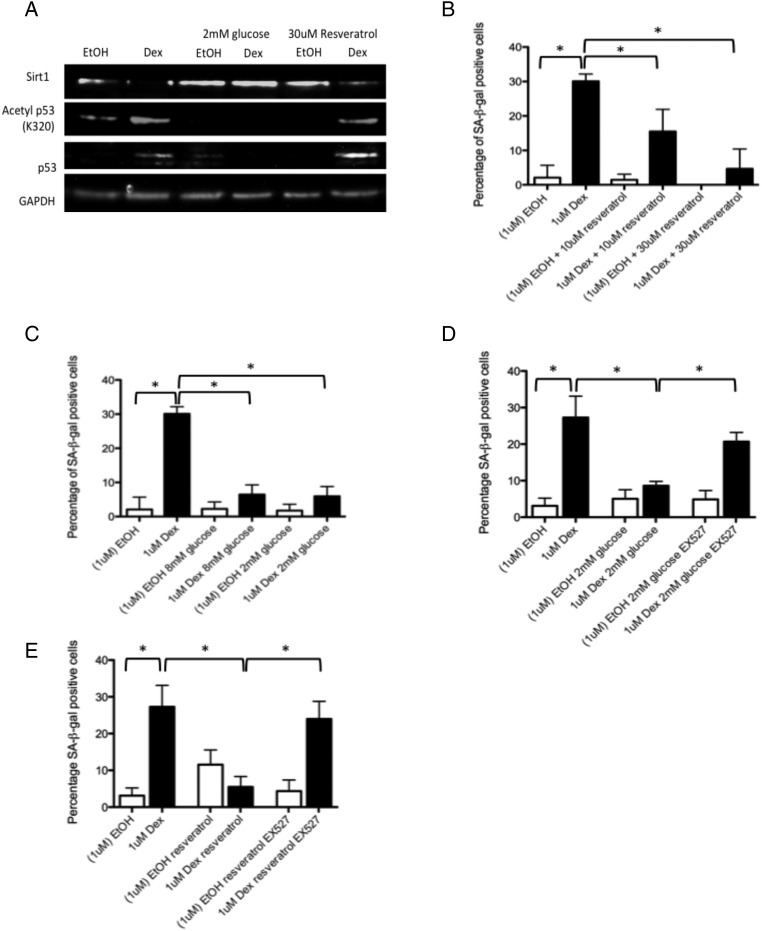Figure 4.
Protective effect of low glucose, low serum and resveratrol on glucocorticoid-induced senescence (A) Protein levels of sirtuin 1 were higher in tenocytes treated with dexamethasone (1 μM) and cultured in low glucose (2 mM) media or co-treated with resveratrol (30 μM) compared with tenocytes treated with dexamethasone and cultured in standard growth media (17.5 mM glucose). Levels of acetylated p53 (lys320) were lower in dexamethasone-treated cells cultured in low glucose (2 mM) media or co-treated with resveratrol compared with tenocytes treated with dexamethasone and cultured in standard growth media (17.5 mM glucose). Western blots were conducted on protein lysates from cells obtained from three different tissue donors. Blots shown are representative of all three experiments. The percentage of SA-βgal-positive cells was significantly lower in dexamethasone-treated cells (B) co-treated with resveratrol (10 or 30 μM) or (C) cultured in low glucose (2 or 8 mM) media; however, no significant difference in the percentage of SA-βgal-positive cells was observed following addition of EX527, a sirtuin 1 inhibitor, in dexamethasone-treated cells (1 μM) cultured in (D) 2 mM glucose or (E) co-treated with resveratrol (30 μM) compared with cells treated with dexamethasone alone and cultured in standard (17.5 mM) growth media (n=3). Statistically significant differences between ethanol (EtOH) and dexamethasone (Dex) and between dexamethasone with and without either resveratrol or 2 mM glucose are indicated by * (p<0.05).

